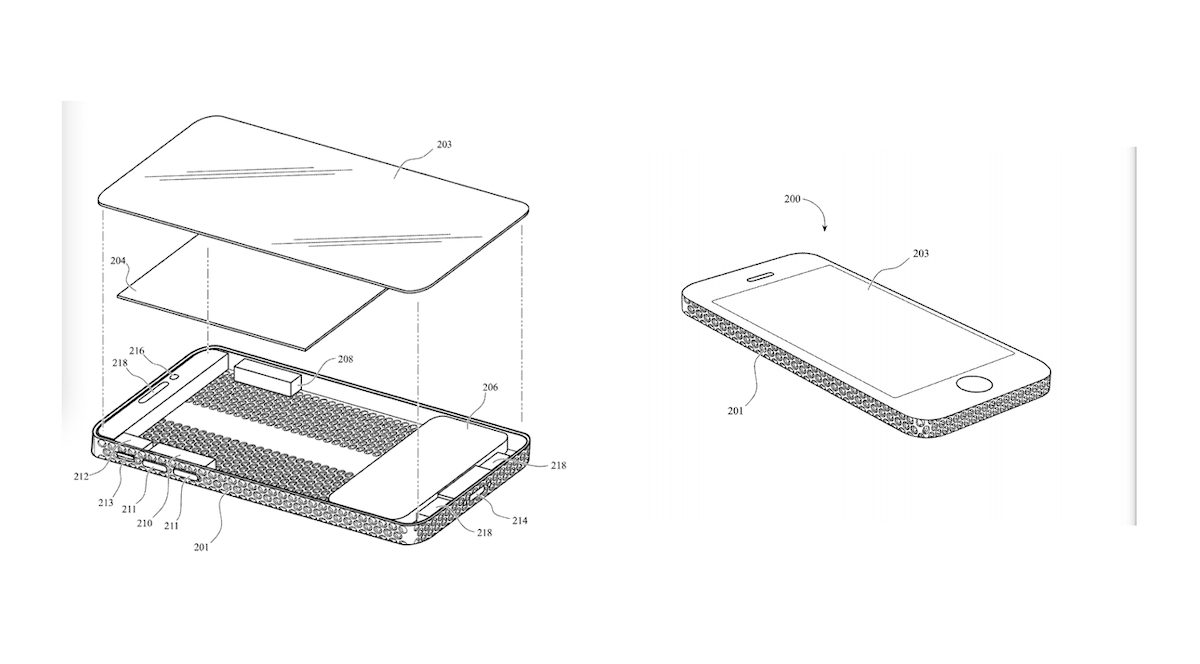The new patents approved by the United States Patent and Trademark Office reveal that Apple is working on a completely new casing design for iPhone and HomePod. The new three-dimensional structure will provide protection internal hardware, effective thermal transmission, better airflow, and other purposes and is described to be designed in a “unique and pleasing look and feel for a user.” As per the attached illustrations in the filing, in the future iPhones’ and HomePods exterior will have the same patterned metal casing as the current Mac Pros’.
The filing argues that the contemporary structure of devices may be inefficient in distributing heat which would lead to a drop in their performance. Therefore, a custom protective casing is required to “provide additional or enhanced functionality and pleasing aesthetic features may be desirable.” Maybe bigger processors used in the smartphone and smart speaker will require more efficient airflow.

Apple’s redesigned 3-D iPhone structure will comprise of layers with unique intersecting patterns
The 3-D outer structure would comprise of two layers with patterns, “first surface and a second surface opposite the first surface” and the patterns will form apertures in the body. With 15 mm thickness and exterior will be made of metal. The document explains that,
In some embodiments, the pattern of apertures can extend substantially across an entire width of the body and include at least two regions separated by a portion of the body that does not include the pattern of apertures. One or more of the first or second pattern of first or second cavities can be a repeating pattern of cavities. The first cavities of the first pattern of cavities can be substantially a same size as the second cavities of the second pattern of cavities.

The crafted “spherical” patterns on both surfaces will be placed to intersect each other for the efficient flow of heat.
The first and second cavities of the first and second patterns can be substantially spherical or hemispherical. The first and second cavities of the first and second patterns can be substantially positioned in a close-packed arrangement. The first and second cavities of the first and second patterns can be substantially positioned in a hexagonally close-packed arrangement. The body can conduct heat away from a component of the electronic device positioned substantially adjacent to the first surface of the body. The body can have a thickness of less than about 15 mm. The body can include a metal.

For HomePod, the design concept remains the same but with a hollow cavity to place the speaker’s components.
In some embodiments, the first cavity can be substantially a same shape as the second cavity. The first cavity and the second cavity can be substantially spherical or hemispherical. The pattern in the body can include a through-hole. The body can form at least a portion of a housing for an electronic device. The body can include a metal, a ceramic, a polymer, a composite material, or combinations thereof. The housing can define an internal volume configured to surround one or more components of the electronic device.
The new design looks very impressive but will be feasible for everyday use, especially for iPhone. Dust, food, and other particles can get stuck in the spherical patterns and might also cause damage to the internal hardware. Having said, that Apple is granted several new patents every year but does not pursue them all. Furthermore, as a design or technology passes through development phases, the final outcome may be subjected to change.
via PatentlyApple
Read More: